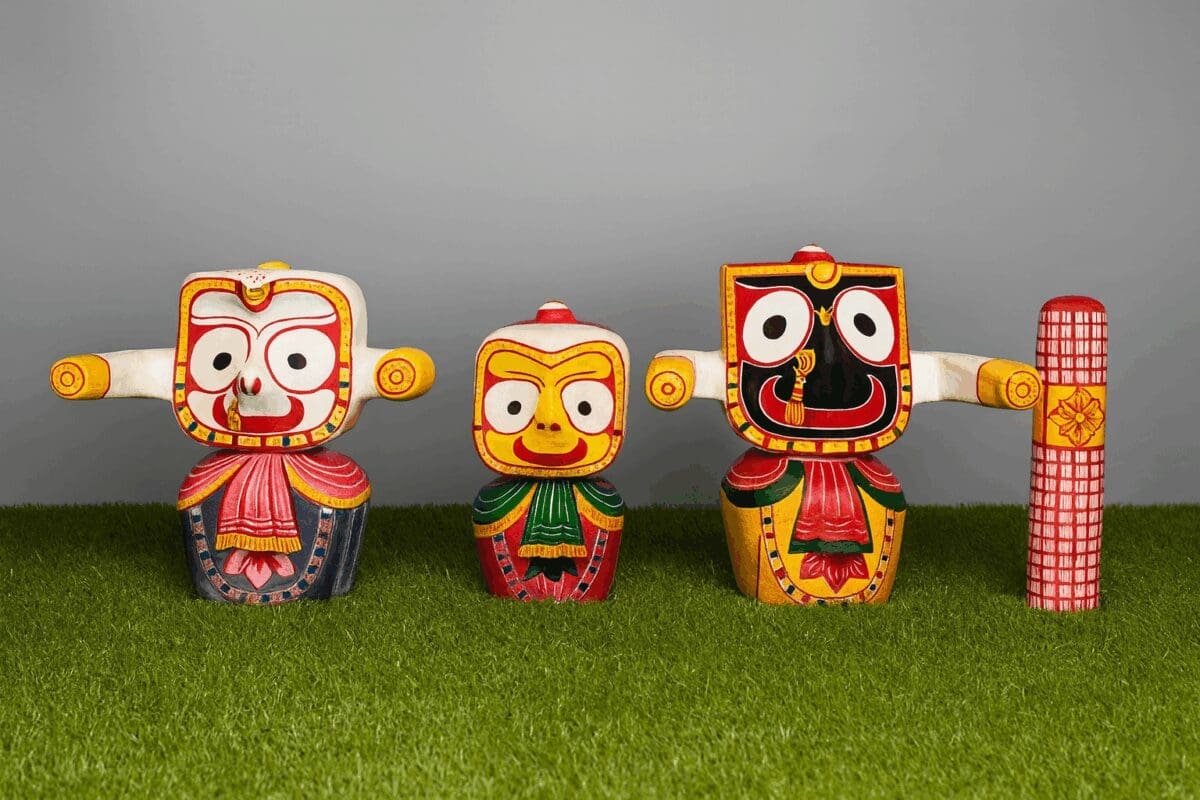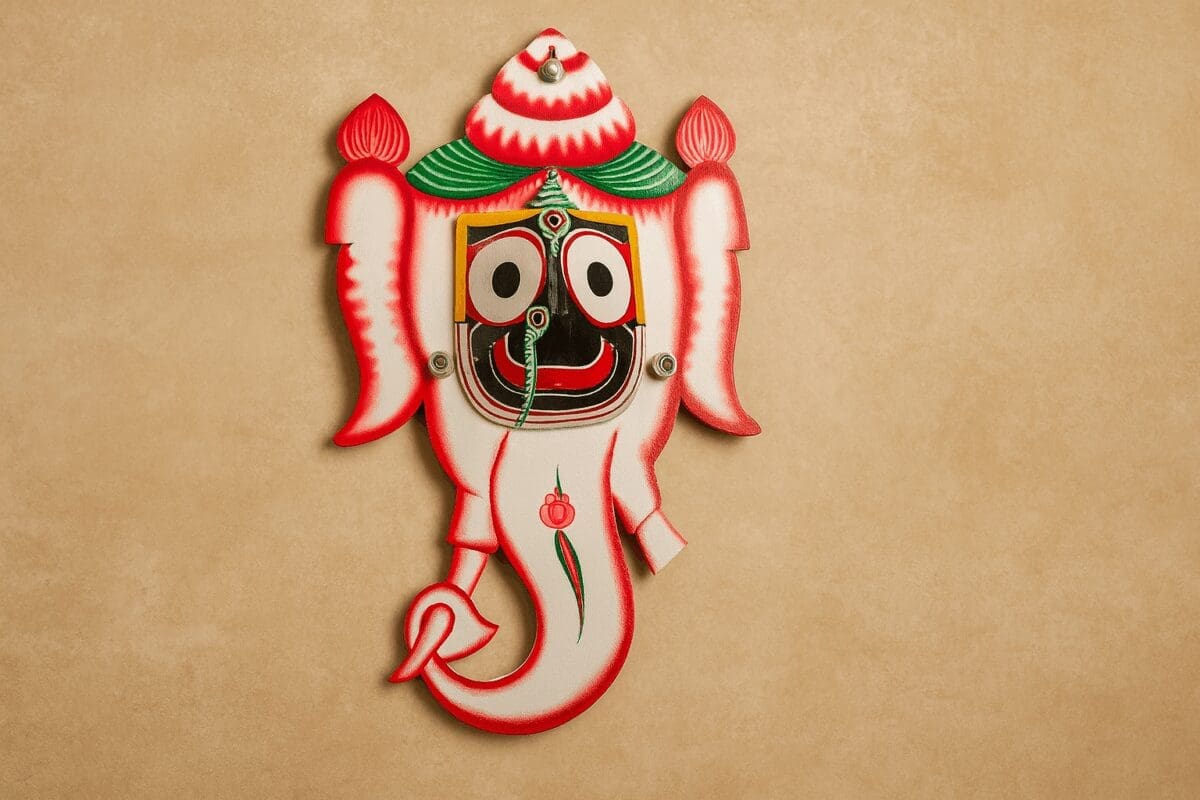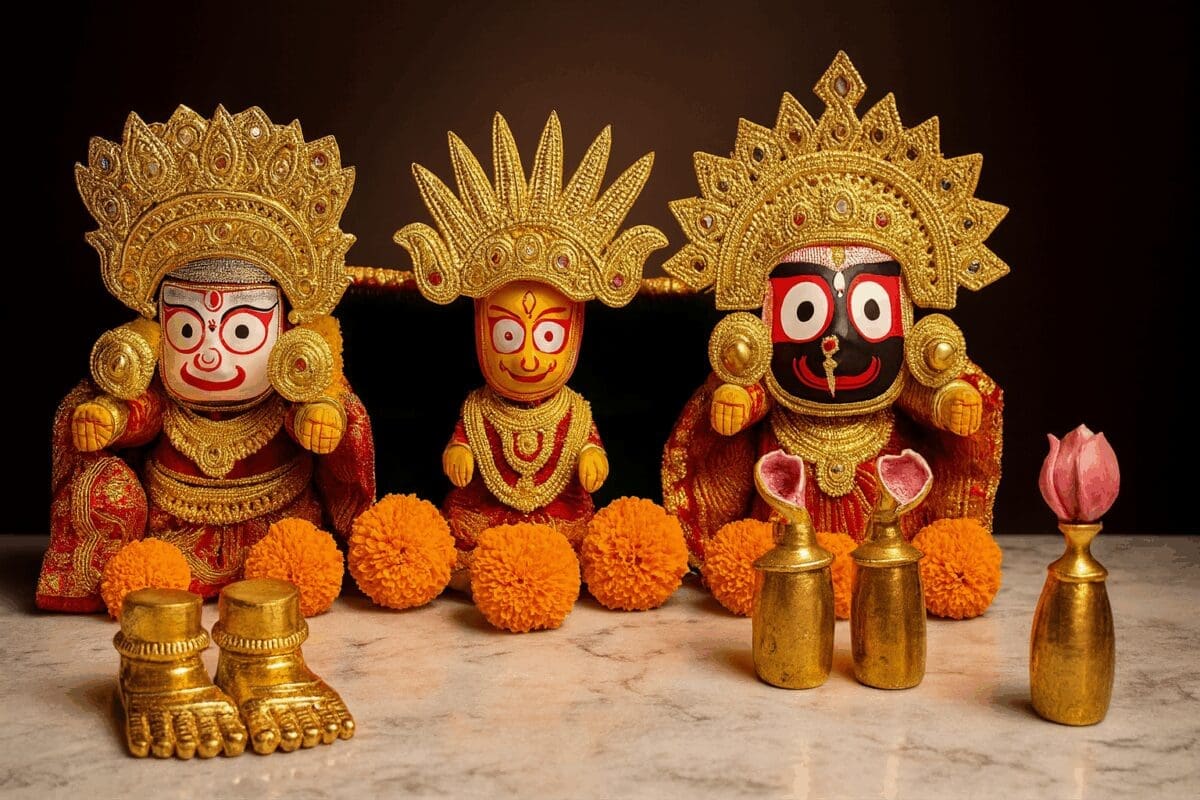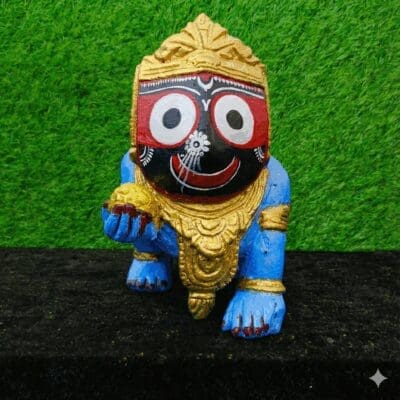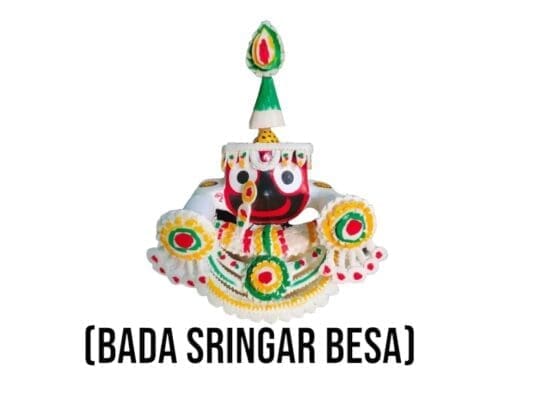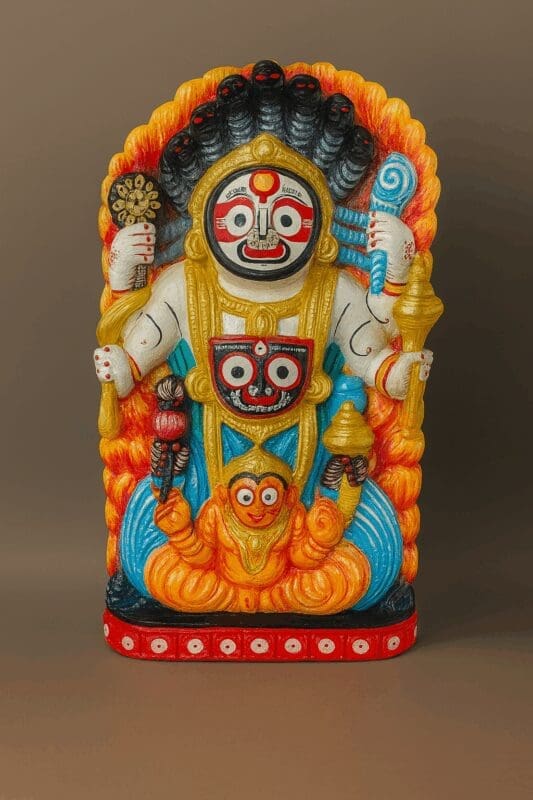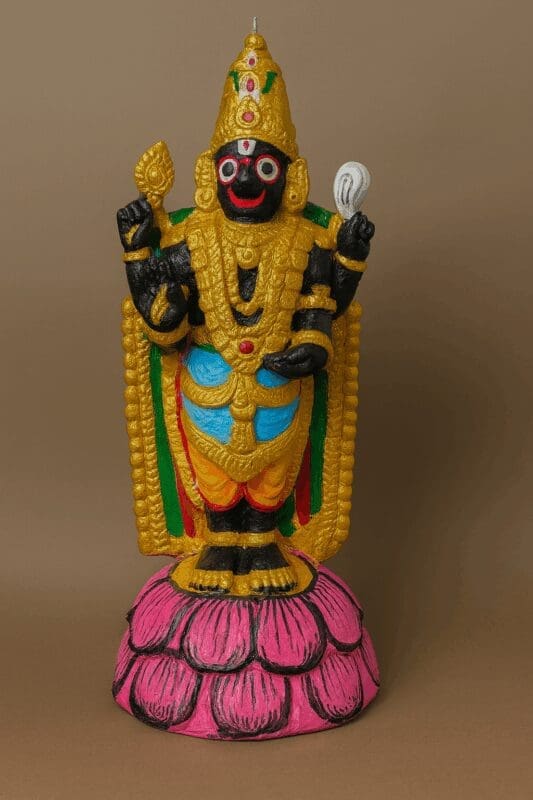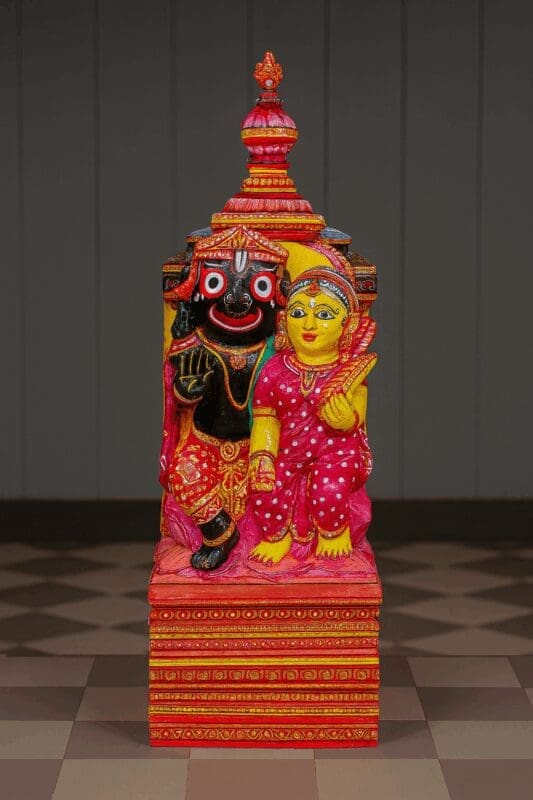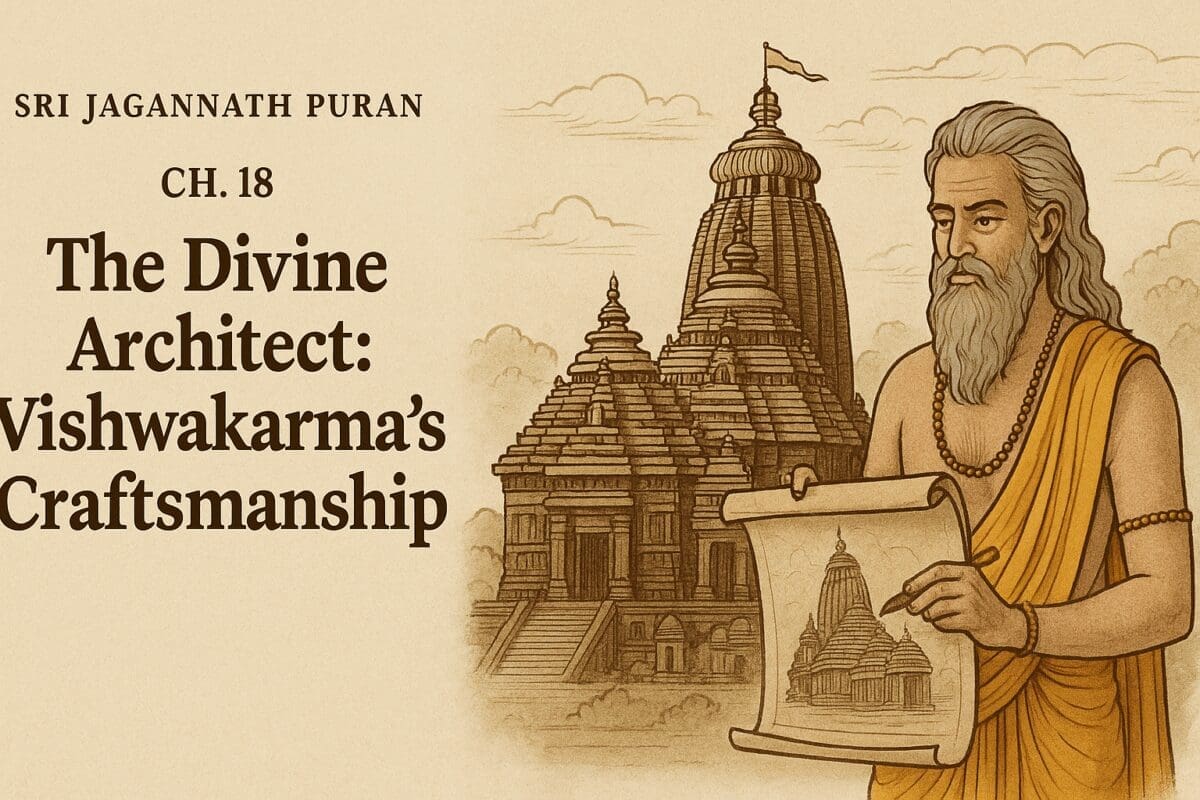Shri Jagannath purana
Brahma’s Hymn: Unveiling the Glory of Jagannath (Ch. 2)
Brahma’s Hymn: Unveiling the Glory of Jagannatha (Ch. 2)
Chapter 2 of “Sri Jagannathakshetramahatmyamu” marks a significant shift from the geographical unveiling of Purushottama Kshetra in the first chapter to a profound exploration of Lord Jagannatha’s divine attributes. As a historian fascinated by the interplay of faith and history, I’m drawn to the rich tapestry of devotion and mysticism woven within this chapter.
The Creator’s Hymn of Praise
The chapter opens with a powerful hymn sung by Brahma, the creator god himself, extolling the virtues and miracles of Lord Vishnu, of whom Jagannatha is an incarnation. This hymn, rich in poetic imagery and philosophical depth, places Jagannatha at the center of the cosmos, as the source and sustainer of all creation.
From a historical perspective, this hymn provides valuable insights into the evolution of Vaishnavism, the Hindu sect dedicated to the worship of Vishnu. The elevation of Jagannatha to the Supreme Lord reflects the growing popularity of this devotional tradition during the period when the “Sri Jagannathakshetramahatmyamu” was likely composed. It also highlights the syncretic nature of Hinduism, where different deities and traditions coexist and complement each other.
Mystical Revelations: Jagannatha’s Divine Attributes
The chapter goes beyond mere praise, delving into the mystical dimensions of Lord Jagannatha’s being. He is described as the embodiment of consciousness, the witness of the universe, the one who transcends both creation and destruction. These descriptions resonate with the core tenets of Advaita Vedanta philosophy, which emphasizes the non-dual nature of reality and the ultimate unity of the individual soul with the Brahman (the ultimate reality).
The text also alludes to the sacred geography of Purushottama Kshetra, reiterating its power to grant liberation even to those who die within its boundaries. This reinforces the notion that the land itself is imbued with divine energy, making it a potent site for spiritual transformation.
Connecting with the Present: Timeless Wisdom for the Modern Seeker
The glorification of Lord Jagannatha in Chapter 2 continues to resonate with devotees today. His image as a merciful and compassionate deity, accessible to all regardless of caste or social status, has made Him one of the most beloved figures in the Hindu pantheon.
For the modern spiritual seeker, this chapter offers profound insights into the nature of the divine and the path towards liberation. It encourages us to look beyond the material world and connect with the eternal source of all creation, recognizing our own inherent divinity.
A Historian’s Reflection
As a historian, I’m fascinated by the way this chapter blends historical context with mystical revelations. It provides a glimpse into the religious and philosophical landscape of ancient India while offering timeless wisdom that continues to inspire and uplift seekers across the ages. The journey through “Sri Jagannath puran” is just beginning, and I’m eager to explore the further depths of this sacred text.
https://justkalinga.com/wp-admin/post.php?post=15645&action=edit&classic-editor


